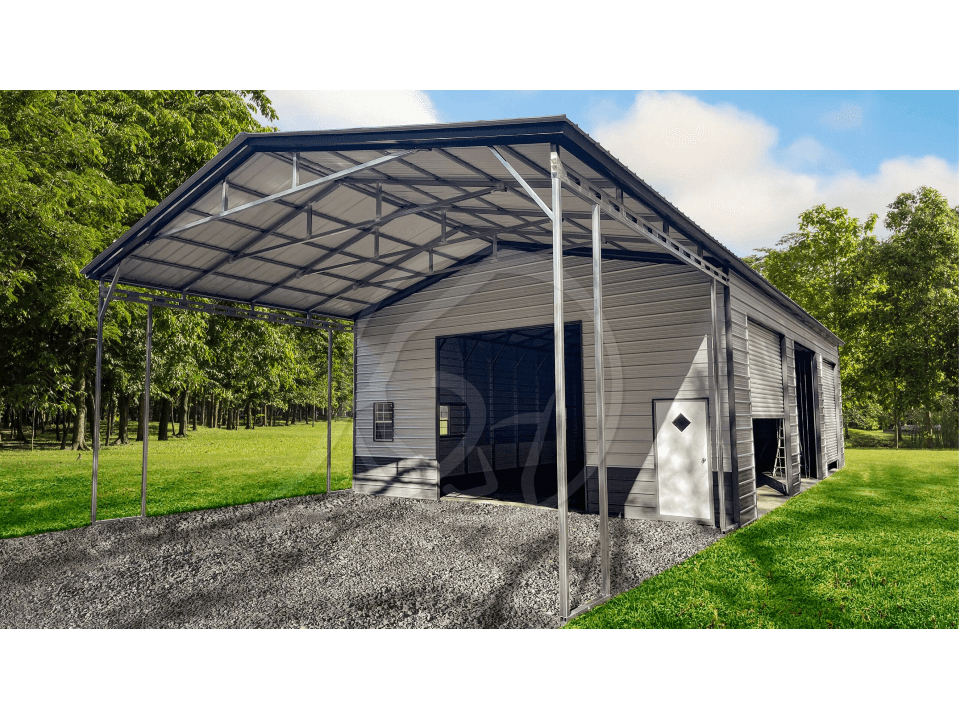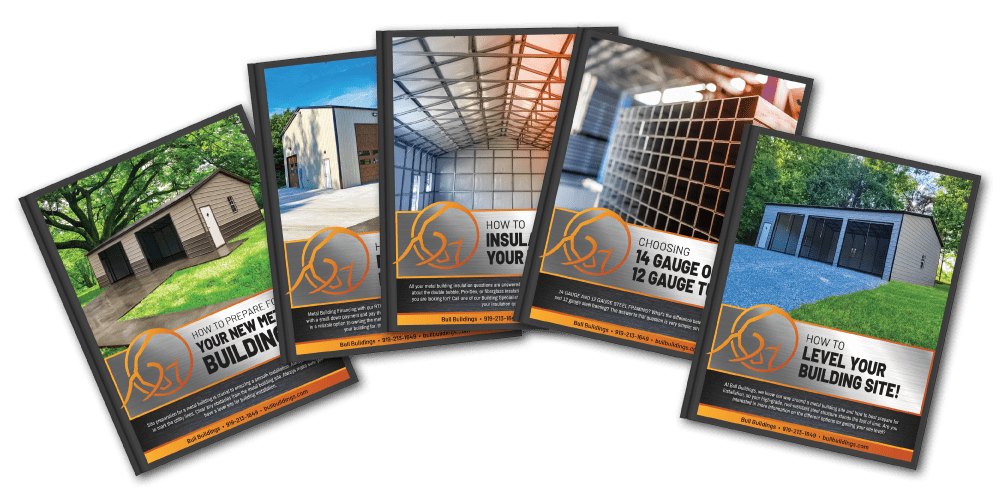
A lean to shed is an excellent choice for homeowners looking to maximize storage space without taking up too much yard area. This type of shed is versatile and can be constructed relatively easily, making it a popular option for DIY enthusiasts. In this article, we will look at the details of lean to sheds, their benefits, and provide a step-by-step guide on how to build one.
What is a Lean-To Shed?
A lean to shed is a structure that has a single sloping roof, typically attached to an existing building. This design allows for efficient water drainage and provides ample storage space for garden tools, equipment, and other items. The simplicity of its design makes it a cost-effective and practical storage solution.
Benefits of a Lean-To Shed
A lean to shed is an efficient and cost-effective storage solution that maximizes space by utilizing existing structures. Its simple design allows for easy construction, making it a practical choice for homeowners and DIY enthusiasts.
- Maximizes Space
A lean to shed utilizes space effectively by being built against an existing wall. This reduces the need for additional land and helps in keeping your yard uncluttered.
- Cost-Effective
Due to its simple design, a lean to shed is often cheaper to build compared to other types of sheds. It requires fewer materials and can be constructed with basic tools.
- Great Project
Building a lean to shed is relatively straightforward, making it a great project for DIY enthusiasts. With proper planning and materials, the shed can be built over a weekend.
Planning Your Lean-To Shed
Proper planning is essential to ensure your lean to shed meets your storage needs and fits seamlessly into your space. By carefully selecting the location, obtaining necessary permits, and designing the shed’s dimensions, you set the foundation for a successful build.
- Determine the Location
Choose a suitable location for your lean to shed. Ideally, it should be adjacent to an existing structure like a house or garage. Ensure the ground is level and has good drainage before you start with the project.
- Obtain Necessary Permits
Check with your local building authority to see if you need any permits for constructing a lean to shed. This will help you avoid any legal issues later on.
- Design and Dimensions
Decide on the dimensions of your shed based on the available space and your storage needs. A typical lean to shed can range from 6×4 feet to 12×8 feet.
Materials and Tools Needed
To build a lean-to shed, you will need several materials and tools. Essential materials include pressure-treated lumber for framing, plywood or OSB for the walls and roof, roofing materials such as shingles or metal roofing, exterior paint or stain, concrete blocks or gravel for the foundation, and various screws, nails, and hardware. The necessary tools for construction are a measuring tape, level, circular saw, hammer or nail gun, drill, screwdriver, and ladder.
Building the Foundation
To build the foundation for your lean-to shed, start by preparing the site. Clear the area of any debris and level the ground, excavating a few inches of soil if necessary to create a level base. Next, lay the foundation by placing concrete blocks or a gravel base where the shed will sit, which will help prevent moisture from seeping into the shed and provide a stable foundation.
Constructing the Frame
To build the floor frame for your lean-to shed, use pressure-treated lumber to construct the frame according to your shed’s dimensions, ensuring it is square by measuring diagonally from corner to corner. Once the frame is complete, install the floor by attaching plywood or OSB sheets to the frame using screws or nails, creating a sturdy base for your shed.
Erecting the Walls
To erect the walls of your lean-to shed, start by constructing the wall frames using pressure-treated lumber, including openings for the door and any windows you plan to install. Once the frames are built, lift them into place and secure them to the floor frame, ensuring the walls are plumb and square before fastening them.
Adding the Roof
To add the roof to your lean-to shed, start by cutting and installing the roof rafters to create the sloping roof, ensuring the rafters are evenly spaced and securely attached to the wall frames. Next, cover the rafters with plywood or OSB sheets to create the roof deck, securing the sheathing with screws or nails. Finally, apply the roofing material by installing shingles or metal roofing according to the manufacturer’s instructions to protect your shed from the elements.
To finish your lean-to shed, start by installing the door using hinges and adding any windows, ensuring they are properly sealed to prevent water ingress. Next, apply exterior paint or stain to protect the shed from weathering, choosing a color that complements your existing structures. Finally, maximize the storage space inside your shed by installing shelves, hooks, and other organizational systems to keep your tools and equipment neatly arranged.
Maintaining Your Lean-To Shed
Regular inspections of your lean-to shed are essential to identify any signs of damage or wear, such as water leaks, loose shingles, or structural damage. Keeping the shed clean by sweeping out debris and removing cobwebs will help maintain its appearance and longevity. Additionally, reapplying paint or stain every few years will keep the shed looking fresh and protected, preventing wood rot and extending its life.
Common Uses for a Lean-To Shed
A lean-to shed offers versatile storage solutions for various household and garden needs. Its compact design makes it ideal for efficiently organizing tools, equipment, and seasonal items.
- Garden Tool Storage
A lean to shed is perfect for storing garden tools like rakes, shovels, and hoes. Keeping these tools organized and accessible makes gardening tasks more efficient.
- Outdoor Equipment Storage
Use the shed to store outdoor equipment such as lawnmowers, trimmers, and wheelbarrows. This protects your equipment from the elements and extends their lifespan.
- Seasonal Storage
Store seasonal items like patio furniture, holiday decorations, and pool supplies in your lean to shed. This helps free up space in your garage or basement.
Tips for Building a Lean-To Shed
Careful planning is crucial to ensure your shed meets your needs and fits your space, so create a detailed plan and gather all necessary materials before starting construction. Invest in quality materials, such as pressure-treated lumber and weather-resistant roofing materials, to ensure your shed is durable and long-lasting. Always follow safety guidelines when building your shed by wearing appropriate safety gear, using tools properly, and avoiding working alone.
Troubleshooting Common Issues
If you notice a leak in your shed’s roof, inspect the shingles or metal roofing for damage, replace any damaged sections, and ensure all seams are properly sealed. Warped wood can occur due to moisture exposure, so make sure your shed is properly sealed and consider using moisture-resistant materials for added protection. If your shed feels unstable, check the foundation and framing for any issues, and reinforce the structure with additional bracing if necessary.
Personalizing Your Lean-To Shed
Incorporate windows or skylights to bring natural light into your shed, making the space more pleasant to work in and reducing the need for artificial lighting. Consider adding electrical outlets to power tools and equipment, which is especially useful if you plan to use the shed as a workshop. Enhance the appearance of your shed by adding decorative elements like window boxes, shutters, or trim, helping it blend seamlessly with your home’s aesthetic.
Comparing Lean-To Sheds to Other Shed Types
Gable sheds have a traditional pitched roof with two sloping sides, offering more headroom but requiring more materials and typically being more expensive to build. Barn-style sheds feature a gambrel roof, providing additional loft space for storage, making them ideal for those needing extra storage, though they are more complex to construct. Saltbox sheds have a longer, sloping roof on one side, offering a unique look and good drainage but may require more intricate framing work.
Enhancing Your Lean-To Shed Experience
Install solar-powered lights to illuminate the shed without the need for electrical wiring, providing an eco-friendly and cost-effective solution. Ensure proper ventilation by adding vents or windows, which helps prevent mold and mildew by allowing air to circulate. Enhance the security of your shed by installing sturdy locks and reinforcing doors and windows, protecting your valuable tools and equipment.
Customizing Your Lean-To Shed
Choose exterior paint colors that match your home or garden theme to help your shed blend seamlessly with its surroundings, and opt for weather-resistant paint to ensure longevity. Maximize the interior space with custom shelving and storage solutions, using pegboards, hooks, and bins to keep tools and equipment neatly arranged. This makes finding and accessing items much easier and keeps your shed organized.
Sustainable Building Practices
Incorporate recycled materials in your shed’s construction for an eco-friendly approach, using salvaged wood and reclaimed metal to add character and reduce environmental impact, while also helping to lower construction costs. Install solar panels to power lights and small tools in your shed, providing a sustainable energy source that is cost-effective and reduces your carbon footprint, while also offering a reliable energy solution.
Enhancing Functionality
Include a workbench in your shed for DIY projects and repairs, providing a dedicated workspace that enhances productivity and organization. Choose a sturdy, weather-resistant material for durability to ensure long-lasting use. Additionally, apply waterproofing sealants to protect your shed from moisture damage, making sure all seams and joints are properly sealed, and perform regular maintenance to keep your shed in top condition.
Practical Applications
Convert part of your lean-to shed into a shelter for pets by providing insulated areas and proper ventilation for their comfort, offering an excellent solution for outdoor animals. Alternatively, transform your shed into a quiet outdoor office space by insulating the walls and adding electrical outlets for office equipment, creating a serene work environment away from household distractions.
Space-Efficient Storage Solutions from Bull Buildings
It is important to have a reliable and space-efficient storage solution to optimize the floor area of your living space. The lean to sheds we source for are designed with durability and practicality in mind, ensuring you get the most out of your investment. Explore our range of metal structures to find the perfect lean to shed for your needs.



